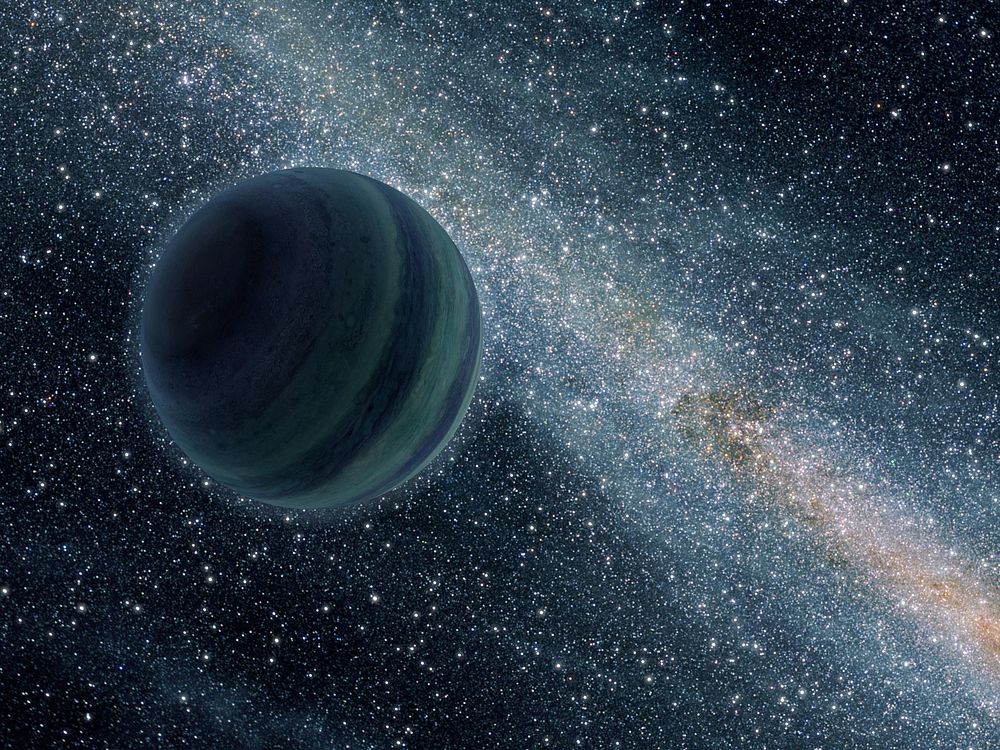https://creativecommons.org/publicdomain/zero/1.0/https://www.rawpixel.com/image/9975358

This artist's conception illustrates a Jupiter-like planet alone in the dark of space, floating freely without a parent star. Astronomers recently uncovered evidence for 10 such lone worlds, thought to have been "booted," or ejected, from developing solar systems.The planet survey, called the Microlensing Observations in Astrophysics (MOA), scanned the central bulge of our Milky Way galaxy from 2006 to 2007. It used a 5.9-foot (1.8-meter) telescope at Mount John University Observatory in New Zealand, and a technique called gravitational microlensing. In this method, a planet-sized body is identified indirectly as it just happens to pass in front of a more distant star, causing the star to brighten. The effect is like a cosmic funhouse mirror, or magnifying lens light from the background star is warped and amplified, becoming brighter.Based on these results, astronomers estimate that free-floating worlds are more common than stars in our Milky Way galaxy, and perhaps other galaxies too.
Original public domain image from Wikimedia Commons
Public DomainFree CC0 image for Personal and Business use